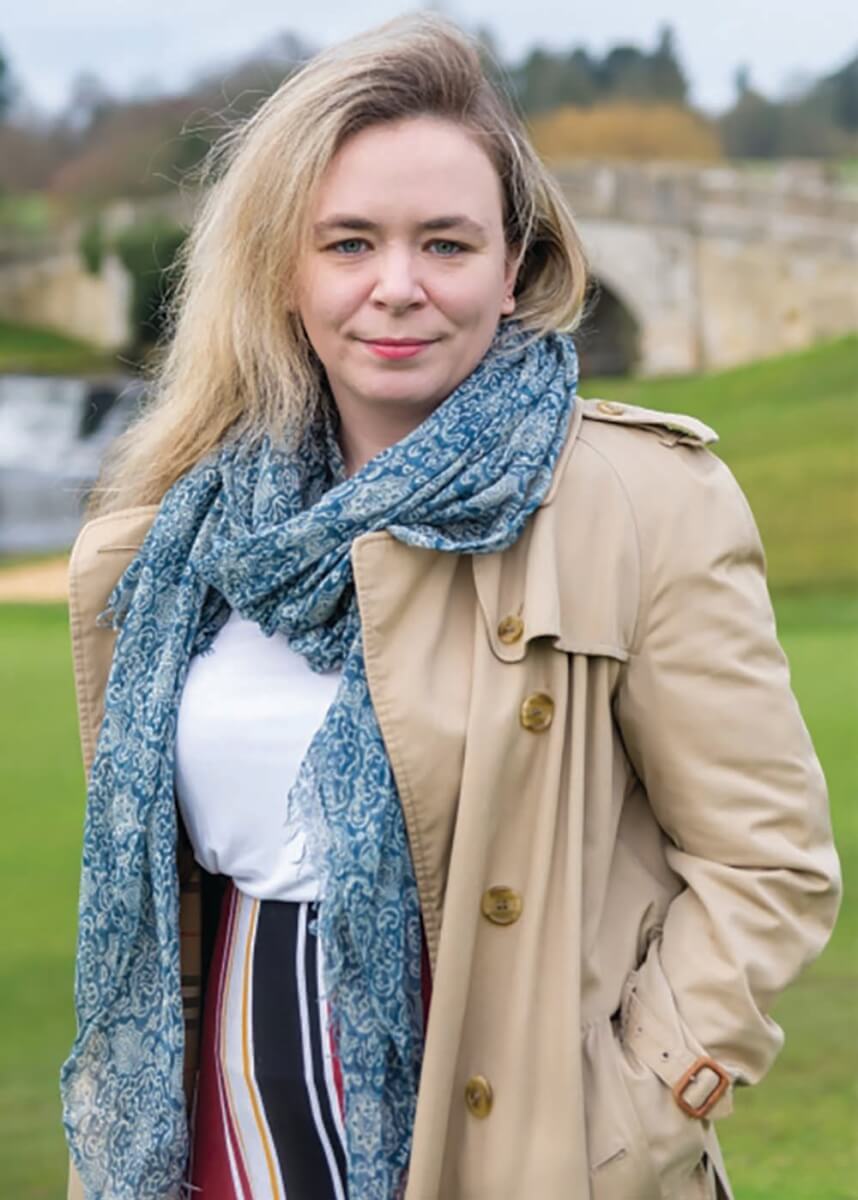The main character of Some Desperate Glory, Emily Tesh’s debut novel, is a vicious, ambitious teenage girl brought up in an isolated community of humans intent on avenging the destruction of Earth. Kyr is anything but “likable”—and, according to Tesh, that’s the point.
A few years ago, I had an idea for a novella. I thought of it as something squarely in my comfort zone: a cute little queer romance between two very different people, one of them Large and the other Chatty. (If you have read my Greenhollow Duology, cute queer romance novellas about Large Gruff Type x Chatty Weirdo is about as precisely my style as it is possible for a story to be.) The fun part of this one would be the setting—in space!—and actually, perhaps there could be a cute alien involved? And I’d just been rewatching “Avatar: The Last Airbender,” which contains one of my favorite villain-to-awkward-teammate arcs of all time, so could I maybe do a Zuko thing?
I wrote one scene: the protagonist reenacting the death of the Earth, racing against time to save a doomed world, sacrificing their own life and still failing. It’s still the opening scene of the book, almost unchanged from that rapid first draft. But after I got 500 words into my cute little romance, I thought: This isn’t cute. This isn’t little. And this would be better if it were about the Zuko-esque character’s awful sister.
“Girls don’t get to be shitheads. And if they are, they don’t get any sympathy.”
I’d spent years mostly writing stories with male protagonists. But I changed all the pronouns in my opening scene, and suddenly I had a monstrous, cruel, ambitious, abused, horrendously angry beast of a character: Kyr. She began as an echo of Azula, a major antagonist in “Avatar: The Last Airbender,” who unlike her brother, Zuko, never gets a redemption arc or a second chance.
Kyr is awful. She really, truly sucks. I found that being subtle about it didn’t work; we have expectations about teenage girl characters, words like “relatable” and “likable.” Male characters are allowed to be complex, difficult, morally gray, even outright shitheads and still get sympathetic antihero arcs. But female characters aren’t supposed to behave that way. Girls don’t get to be shitheads. And if they are, they don’t get any sympathy.
I didn’t want anyone to mistake Kyr for “relatable” and “likable.” If you want to write a villain redemption arc, you have to start with a villain.
Kyr is the villain. The monster girl, the unlovable and unworthy. I remember writing an early scene in which she mercilessly bullies a small child in a glowing triumph of self-righteous arseholery and thinking, is this clear enough? Will they even let me do this? Do I have to tone her down? I was a long way outside my creative comfort zone. But you can feel it, as a writer, when the thematic underpinnings are locking into place: justice or vengeance, heroism or self-destruction, the past or the future. Kyr proves in that original opening scene that she can do what every lovable teen protagonist has to do sooner or later: sacrifice herself to save the world. I had to spend the whole book turning her inside out, remaking her, undoing her, until she finally found a way to do the opposite: sacrifice her cruel and narrow and hateful world in order to save herself.
Picture of Emily Tesh by Nicola Sanders Photography.






